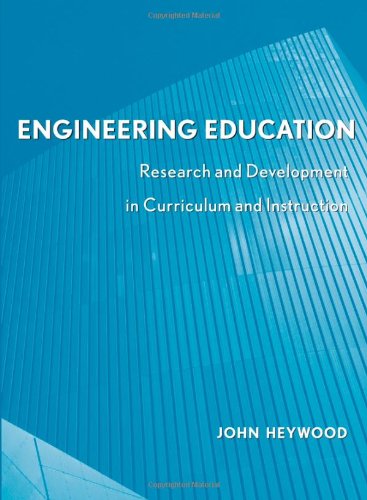Product desciption
Engineering Education Research And Development In Curriculum And Instruction 1st Edition John Heywood by John Heywood 9780471741114, 0471741116 instant download after payment.
A synthesis of nearly 2,000 articles to help make engineers better educators
While a significant body of knowledge has evolved in the field of engineering education over the years, much of the published information has been restricted to scholarly journals and has not found a broad audience. This publication rectifies that situation by reviewing the findings of nearly 2,000 scholarly articles to help engineers become better educators, devise more effective curricula, and be more effective leaders and advocates in curriculum and research development.
The author's first objective is to provide an illustrative review of research and development in engineering education since 1960. His second objective is, with the examples given, to encourage the practice of classroom assessment and research, and his third objective is to promote the idea of curriculum leadership.
The publication is divided into four main parts:
* Part I demonstrates how the underpinnings of education----history, philosophy, psychology, sociology----determine the aims and objectives of the curriculum and the curriculum's internal structure, which integrates assessment, content, teaching, and learning
* Part II focuses on the curriculum itself, considering such key issues as content organization, trends, and change. A chapter on interdisciplinary and integrated study and a chapter on project and problem-based models of curriculum are included
* Part III examines problem solving, creativity, and design
* Part IV delves into teaching, assessment, and evaluation, beginning with a chapter on the lecture, cooperative learning, and teamwork
The book ends with a brief, insightful forecast of the future of engineering education. Because this is a practical tool and reference for engineers, each chapter is self-contained and may be read independently of the others.
Unlike other works in engineering education, which are generally intended for educational researchers, this publication is written not only for researchers in the field of engineering education, but also for all engineers who teach. All readers acquire a host of practical skills and knowledge in the fields of learning, philosophy, sociology, and history as they specifically apply to the process of engineering curriculum improvement and evaluation


